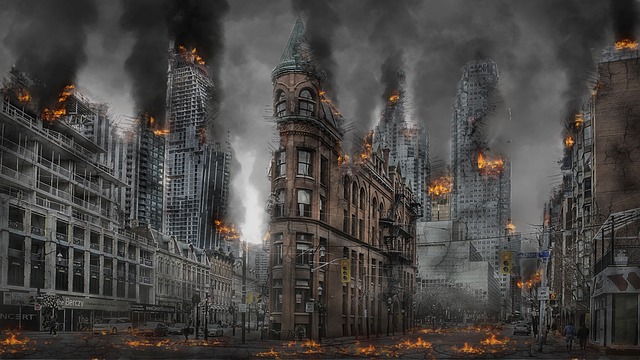San Antonio storm damage repair often includes smoke odor remediation after fires caused by storms. Volatile organic compounds (VOCs) and particulate matter from burning materials create persistent odors that can be mitigated through specialized techniques such as thorough cleaning, odor neutralizing agents, and replacing affected items. A multi-step guide for professional smoke odor remediation includes assessment, contents and structural cleaning, repair/restoration, and post-remediation checks to ensure safe living conditions. Homeowners should prioritize this process after storm damage, taking proactive measures like proper ventilation, air purifiers, regular HVAC filter replacement, and sealing gaps to maintain fresh indoor air quality.
After a storm hits, smoke odors can linger in your San Antonio home, caused by damaged materials and surrounding fires. Understanding these odors is the first step towards remediating them. This guide walks you through the process of addressing post-storm smoke odor issues, offering practical tips tailored to San Antonio homeowners. From initial assessment to final cleanup, learn how to restore your home’s fresh scent effectively. Additionally, discover preventive measures to avoid future smoke odor problems during storm damage repair.
- Understanding Smoke Odors After Storm Damage in San Antonio
- The Remediation Process: Step-by-Step Guide for Homeowners
- Tips for Preventing Future Smoke Odor Issues Post-Storm Repair
Understanding Smoke Odors After Storm Damage in San Antonio

After a storm, San Antonio homeowners often face the daunting task of smoke odor remediation following fire damage. Smoke odors can permeate fabrics, walls, and appliances, creating an unpleasant experience for any resident. Understanding the origins of these odors is crucial in the recovery process. When fires break out during storms, they release a complex mix of chemicals into the air, which then deposit onto surfaces as the smoke cools. This includes volatile organic compounds (VOCs) and particulate matter that can linger long after the flames are extinguished.
The humidity and temperature fluctuations common in post-storm conditions can exacerbate the problem by slowing down the evaporation rate of these odor-causing substances. As a result, San Antonio storm damage repair often involves specialized techniques to mitigate smoke odors. This includes thorough cleaning, using odor-neutralizing agents, and, in some cases, replacing affected items to ensure a safe and comfortable living environment for homeowners.
The Remediation Process: Step-by-Step Guide for Homeowners

After a storm, your home might be left with persistent smoke odors from fires or charred materials. This is where professional smoke odor remediation comes in as a crucial step in San Antonio homeowners’ storm damage repair process. Here’s a simple guide to help you understand how the remediation process works:
1. Assessment and Planning: Begin by assessing the extent of the damage and identifying sources of odors. Professionals will inspect your home, checking for any hidden moisture or smoke residue. This step is vital as it determines the best course of action to ensure complete odor elimination.
2. Contents Cleaning and Deodorization: Once the source is identified, affected items like furniture, carpets, curtains, and even walls need to be cleaned and deodorized. Professionals use specialized equipment like air scrubbers and dehumidifiers to remove odors at their root cause—moisture and organic compounds.
3. Structural Cleaning: The remediation process doesn’t stop at contents cleaning. Structural components like ductwork, ventilation systems, and surfaces might also retain odors. Experts will clean these areas thoroughly using advanced techniques to ensure no trace of smoke or mold remains.
4. Repair and Restoration: After effective odor removal, any damaged structures should be repaired. This could involve replacing charred or water-damaged items and repairing or rebuilding sections affected by the storm.
5. Post-Remediation Checks: Finally, a thorough inspection is conducted to ensure all odors are gone. This step guarantees that your home is safe and livable after the remediation process.
Tips for Preventing Future Smoke Odor Issues Post-Storm Repair

After a storm, San Antonio homeowners often face the challenge of smoke odor remediation. To prevent future issues, it’s crucial to take proactive measures during and after storm damage repair. Start by ensuring proper ventilation during the cleaning process, using air purifiers or high-efficiency particulate air (HEPA) filters to remove lingering odors. Regularly clean and replace air filters in your HVAC system to maintain fresh indoor air quality.
Additionally, inspect and seal any gaps or cracks in walls, ceilings, and floors that might have been compromised during the storm. These openings can allow smoke and odor molecules to penetrate and settle, causing future issues. Using waterproof materials and sealing any entry points will create a protective barrier against both moisture and odors, ensuring your home remains a safe, comfortable space for years to come.
After experiencing storm damage, San Antonio homeowners often face the challenge of smoke odor remediation. This article has provided a comprehensive guide, from understanding the source of these odors to offering practical steps for removal and prevention. By following the suggested remediation process and tips, folks can effectively tackle post-storm repair issues, ensuring their homes are not just structurally sound but also free from lingering smells. Remember, prompt action is key when it comes to storm damage repair for San Antonio homeowners, so don’t hesitate to take a dive into these strategies to restore your home’s fresh scent.
